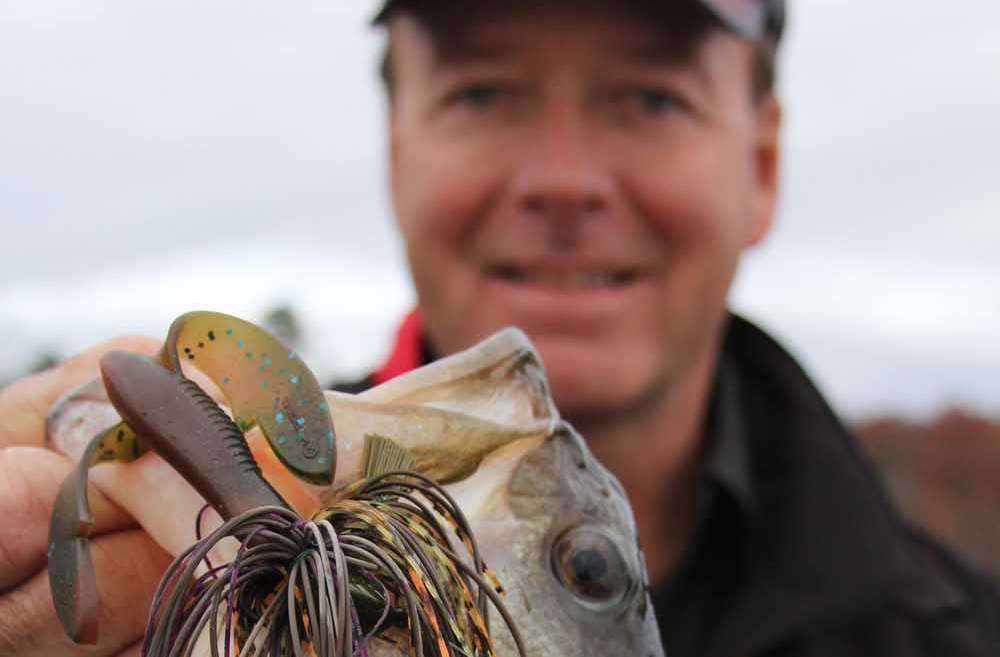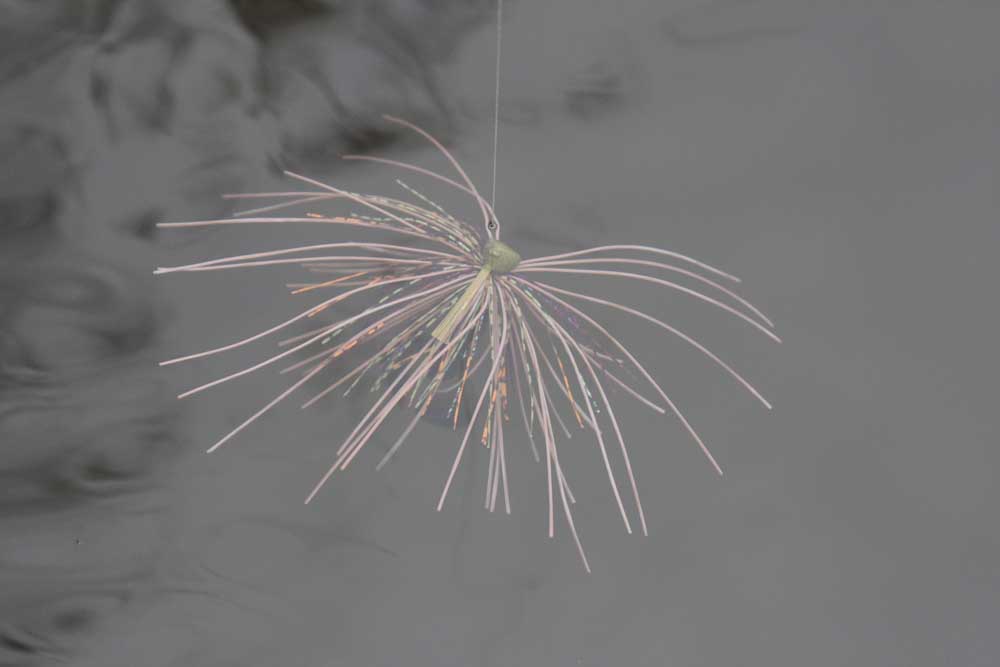
When the water is cold and most anglers are fishing steep bluffs or deep water, Davy Hite is quite content to stay shallow and flip the cover.
Crazy? Not according to Hite, who uses flipping/pitching techniques year-round. He says it’s the best technique to use when you’re unfamiliar with a lake during the winter months.
“Most people don’t realize that there are shallow fish during winter, even when the water temperature is in the 40s … or even 30s,” said the South Carolina pro. “It’s true that a lot of bass will suspend in deep water during winter, but when they’re ready to eat, they’ll move to a shallow ambush area. That’s just their nature.”
However, you’re probably wasting your time flipping to bushes in the back of a shallow cove. Shallow cover adjacent to deep water is more likely to hold bass on a sun-drenched bank on a cold winter day.
To be an effective winter flipper, keep these three keys in mind:
Opt for a jig
Leave your Texas rigged creature baits at home, Hite advised. A jig and trailer is all you need.
“A jig with a living rubber skirt is critical,” he insisted. “That skirt gives a subtle action even when you aren’t moving the bait.”
His favorite winter jig is a Buckeye Lures Mop Jig with a bushy, long living rubber skirt.
“Avoid the temptation to trim the skirt in the winter,” Hite offered. “Big fish in winter are lethargic and want a big, easy meal. They aren’t in a chasing mood, so a bigger bait that falls in front of them can satisfy their feeding needs.”
While Hite prefers heavier, fast sinking jigs during the summer, lighter jigs (1/4 and 3/8) that fall slower are more appealing and look more natural this time of year. Stick to basic colors, like black, black/blue or green pumpkin.
Also, avoid vibrating or wiggly jig trailers. For winter, he uses a Trigger X Goo Bug and leaves the craw pinchers attached.
“With pinchers attached, the bait has more of a slow, gliding action which is more appealing this time of year,” he said.
Make precise pitches
It’s critical to present your bait quietly and directly into the heaviest cover. The bass won’t stray outside of it to feed, so a direct hit will get you the best reaction.
For that reason, you must be very familiar and comfortable with your equipment.
“Everyone thinks they have to have a big ol’ flipping rod, big heavy line and fast gear ratio reel to flip,” he explained. That’s just not true, especially when you’re new at this and not built to handle that kind of outfit.”
For example, a short person or youngster may be better suited for a 6-6 or 7-foot rod. They’ll be more accurate and a better fishermen with one that fits their stature.
Be patient
This is not the time of year to impart a lot of action in your jig when it hits the bottom. Oftentimes, Hite will let it lie for several seconds before he moves it.

“Again, that Mop Jig skirt ‘breathes’ and moves with natural currents,” he explained. “In that cold water, nothing really moves fast. You want the bait to look natural.”
He may twitch the jig occasionally or pull it up into the cover and let it ease back to the bottom and let it get in the fish’s face again.
Also, he added, the bites are very subtle and will feel a little mushy in the winter.
“Gently tighten up on the line and feel for any resistance,” he described. “That could be a bass that has the jig in his mouth and you didn’t feel him bite it.”
Originally published 2013.





